Afghanistan chasing World Cup semi-final under flag banned by Taliban
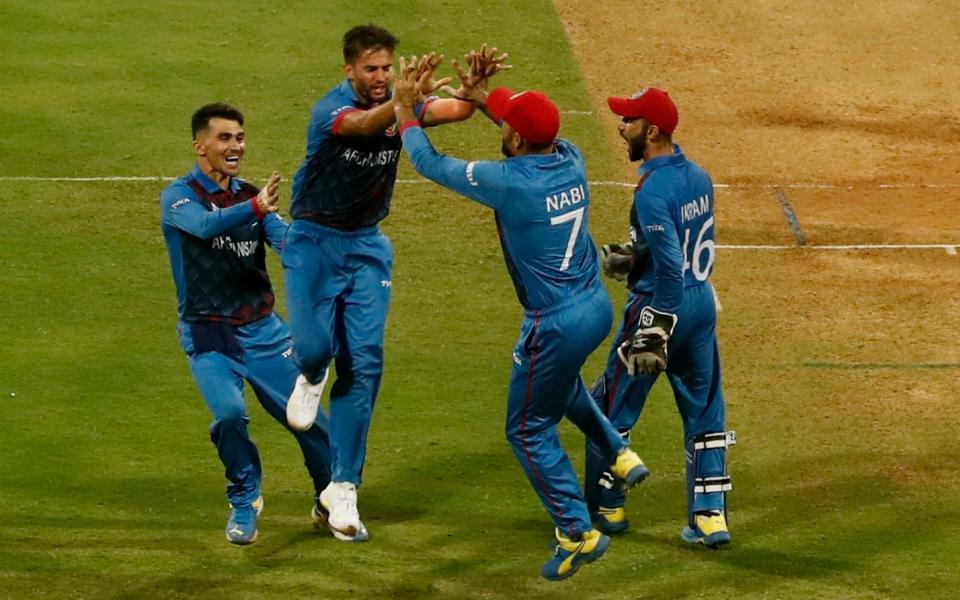
A team in exile, playing under a flag that no longer exists are potentially one victory away from reaching the Cricket World Cup semi-final. Afghanistan remain the most remarkable tale of the 13th one-day international World Cup, no matter that Glenn Maxwell’s astounding innings in Mumbai on Tuesday prevented Australia from being their latest victim.
After defeating England in Delhi, Afghanistan have since beaten Pakistan, Sri Lanka and Netherlands too. All four victories have been comprehensive. Should South Africa join Afghanistan’s list of vanquished opponents on Friday, and New Zealand and Pakistan fail to win their final group matches, then Afghanistan will qualify for the World Cup semi-finals.
Through a narrow sporting prism, Afghanistan’s achievement is extraordinary. It is only 19 years since the side played their first international match. During the years since, Afghanistan have vaulted through the lower echelons of the international game to become a Test nation – and, with some of the most in-demand talent in the Indian Premier League, become a major threat to any country in the white-ball game.
The deeper political context elevates Afghanistan’s tale to a different plane. Before each game at this World Cup, Afghanistan’s players have sung an anthem that officially no longer exists. Like the side’s black, red and green colours and flags the anthem belongs to a republic that was toppled by the Taliban in August 2021. The side’s squad are split between those who still live predominantly in Afghanistan and others, including star leg spinner Rashid Khan, based elsewhere.
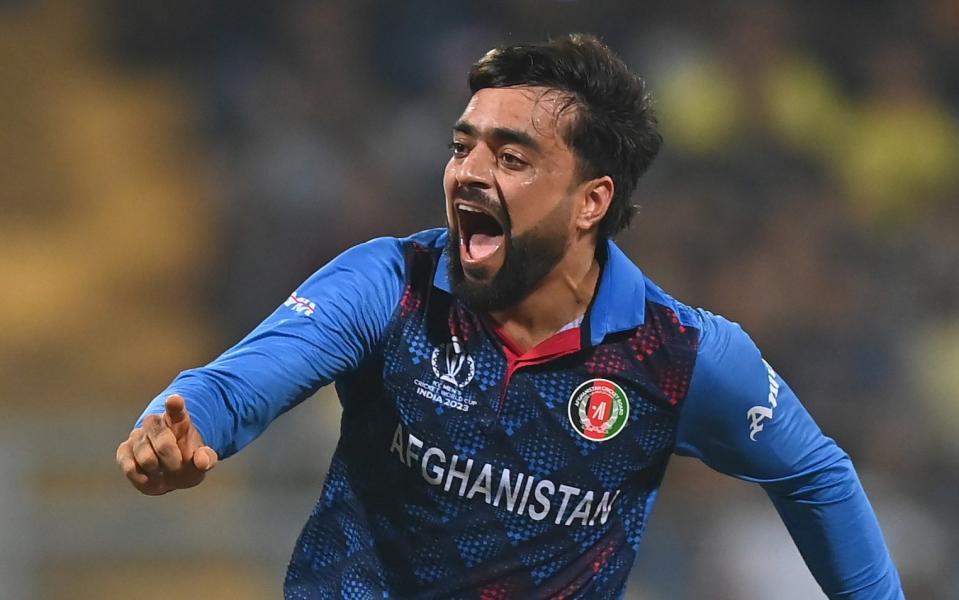
Their success this tournament has, however fleetingly, united both the Taliban regime and those horrified by their return. Street celebrations in Kabul and other cities have marked Afghanistan’s World Cup victories. The jubilation has been amplified by a nation’s grief after a devastating spate of earthquakes since October.
“It will be a big celebration back home,” Rashid said after defeating England. “Cricket is the only source which gives them lots of happiness and lots of good memories and people back home just wait.”
Taliban-approved dress code
The first recorded game of cricket in what is now Afghanistan took place in 1839, when British soldiers in Kabul played the game during the First Anglo-Afghan War. Locals, wrote the Rev GR Gleig, “looked on with astonishment at the bowling [and] batting of the English players”. During the Second Anglo-Afghan War, from 1878–1880, locals played alongside Britons.
For the next century, cricket remained dormant in Afghanistan. Its rise was borne out of horror: the Soviet Union’s invasion in 1979. The war led to millions of Afghans fleeing, especially to Peshawar, in Pakistan. There, they discovered the joys of cricket, playing with a stick and plastic bags wrapped up to make a ball or, when they could source one, a tape-ball – a tennis ball covered in tape – in refugee camps. The Afghan Cricket Club was formed in the Kacha Garhi refugee camp; flat land was scarce, so most games were played on a far steeper slope than at Lord’s. The team would come to defeat strong local clubs in Peshawar.
As refugees returned to Afghanistan, they brought their new game with them. During the first Taliban reign, from 1996-2001, cricket – men’s cricket, at least – was accepted by the regime.
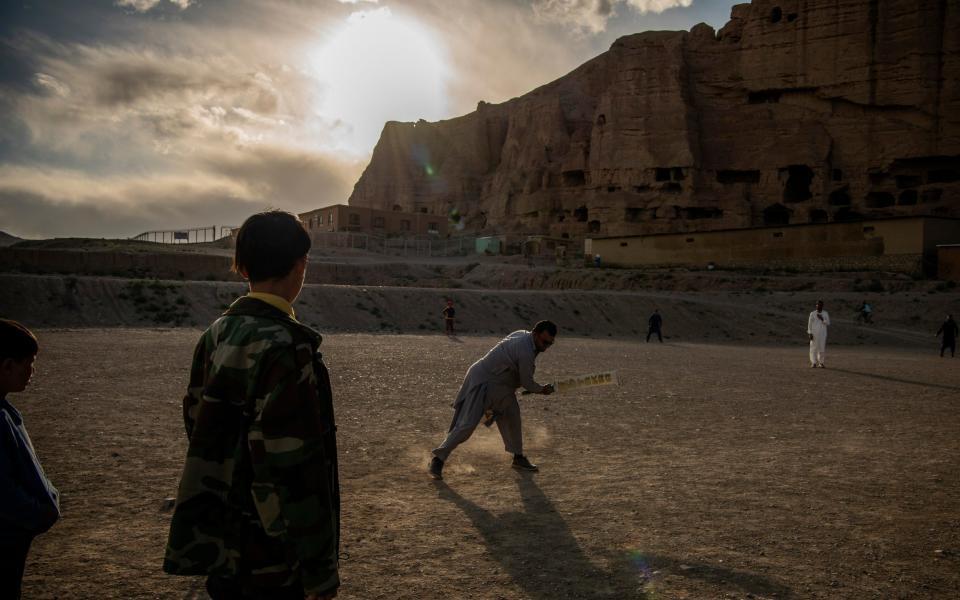
With its conservative dress code and no direct physical contact between players, the game was amenable to the Taliban. Cricket also has strong similarities to the old Afghan game of top danda: both games involve a wooden bat hitting a spherical object. Far from being seen as an English game, to returning Afghan refugees it was a Pakistani one; Pakistan was one of just three states to recognise the Taliban as Afghanistan’s official government.
‘It brings peace to every tribe’
In January 2000 the Taliban urged the Afghanistan Cricket Federation, formed in 1995, to write to the Pakistan Cricket Board requesting support to join the International Cricket Council as a new affiliate member. The request was granted in June 2001, three months before US and UK troops entered Afghanistan after the 9/11 terror attacks.
In 2003, players from all over Afghanistan assembled for the first national trials, which were held in Kabul. Kit and equipment were sourced from donations around the world, including Pakistan, the MCC Foundation and the Afghan Connection charity. Afghanistan played their first official international match in 2004, losing to Oman by four wickets at the Asian Cricket Council Trophy.
Afghanistan’s No 7 that day was Mohammad Nabi, who spent the first 16 years of his life as a refugee in Peshawar. Now 38, Nabi has played every match in the 2023 World Cup. “It’s the main role of playing cricket in Afghanistan – it brings peace to every tribe,” he once explained.
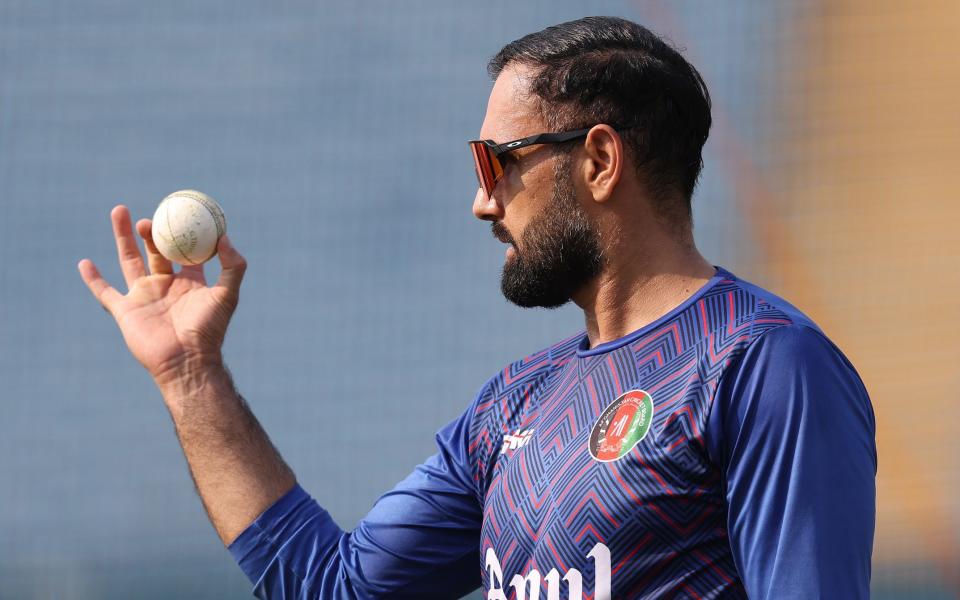
Nabi helped Afghanistan navigate the lower echelons of the International Cricket Council’s competitions, winning promotion through tournaments in Jersey, Tanzania and Argentina. There, at a tournament in January 2009, rain gave Afghanistan a reprieve when facing near-certain defeat by the lowly Cayman Islands. “I have seen people die and I have not shed a tear,” star fast bowler Hamid Hassan said. “But there is something about cricket that gets me here [pointing to his heart]. Cricket is our chance.”
Six years later in Dunedin, Hassan was batting when Afghanistan secured their first-ever World Cup victory, a fraught one-wicket win over Scotland. It was a seminal moment in Afghanistan’s journey to joining the rarefied club of Test nations: they were elevated, simultaneously with Ireland, in 2017 to take the group to 12. Yet Afghanistan were always a unique case: for security reasons, no countries agreed to tour the country.
ICC opt not to ban Afghanistan over women’s rights
In August 2021, Rashid tweeted his despair as the Taliban were regaining control of his country.
Dear World Leaders! My country is in chaos,thousand of innocent people, including children & women, get martyred everyday, houses & properties being destructed.Thousand families displaced..
Don’t leave us in chaos. Stop killing Afghans & destroying Afghaniatan🇦🇫.
We want peace.🙏— Rashid Khan (@rashidkhan_19) August 10, 2021
A few months earlier, national contracts had been introduced for 25 women’s players. Before they could play an international match, the Taliban had returned. While the Taliban have grown to embrace men’s cricket, women are barred from playing; the contracted players all fled, fearing their lives. Most now reside in Australia.
The Taliban’s opposition to women’s rights led to calls for Afghanistan to be banned from international cricket. The International Cricket Council have taken a different view, arguing that suspending Afghanistan’s men’s side would punish the country’s population, not the regime.
“As a citizen of Afghanistan, I’m happy that Afghanistan is playing in World Cup,” says Tuba Sangar, who was the women’s cricket development manager for the Afghan Cricket Board and fled to Canada as the Taliban returned. “Cricket is the only thing that at least people talk about Afghanistan positively. But, as a woman, it’s a hard feeling for me that I wish we have the same opportunity to play cricket.”
Sangar understands why men’s players have mostly been silent about the plight of the women’s team. “I wish they can talk but I couldn’t blame them because their family live there. If they about the situation, I know there will be some problems.”
It has been suggested that ICC funding meant for Afghanistan’s women’s programme – now non-existent – could be diverted to female cricketers who have fled, with the exiled players even forming a team. “We want the same opportunity,” Sangar says. “If ICC wants Afghanistan women’s team to play we can come together and find a solution.”
A more mature style of cricket
While the political and humanitarian crisis in Afghanistan has deepened – the country is ranked the worst in the world for women’s inclusion, justice and security, with the Taliban banning women from attending university, and 90 per cent of the population live in poverty – the side arrived in India for the World Cup to modest hopes. During the 2019 World Cup, Afghanistan lost all nine matches.
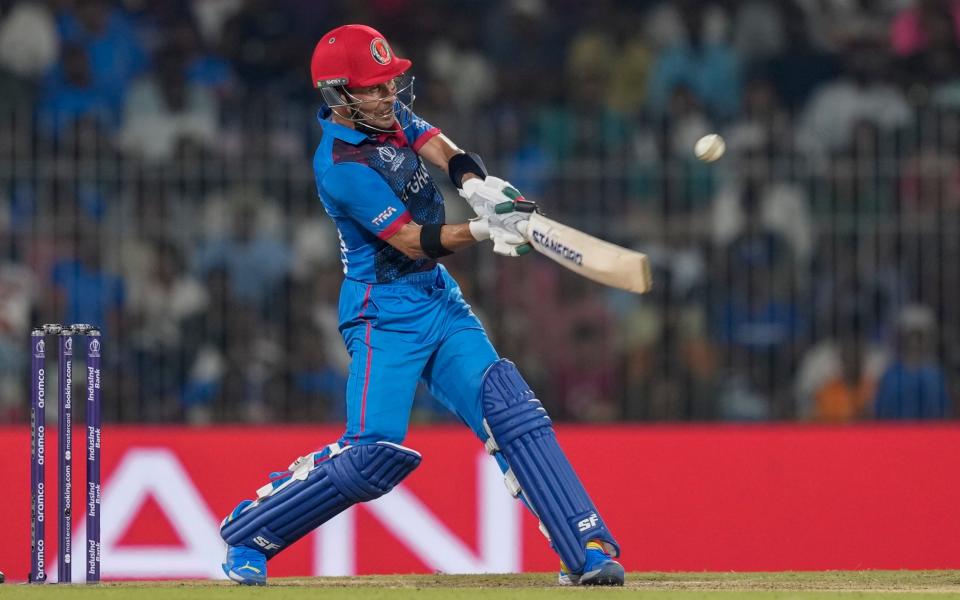
But, with Rashid and several other players having notable Indian Premier League pedigree, Afghanistan are much better suited to Indian conditions. While Afghanistan’s spinners have always been the side’s strength, their seamers – Naveen-ul-Haq, Azmatullah Omarzai and Fazalhaq Farooqi – have swung the new ball dangerously.
Yet Afghanistan’s most notable improvement has been in their batting. It was once said that Afghanistan were a team of number eights: dangerous but inconsistent ball-strikers. No longer. The explosive 21-year-old Rahmanullah Gurbaz, who hit 80 against England, is on course to be his country’s finest ever batsman; he has formed a fine opening partnership with the more sedate Ibrahim Zadran, who scored a century against Australia. Head coach Jonathan Trott, who has never been to Afghanistan, said that he wanted to improve the side’s ability to rotate the strike in between scoring boundaries; the team are making good on his wish. Even if Afghanistan do not advance to the last four, the abiding sense – with 11 of their World Cup squad aged 25 or younger – is that the best of this team should still be to come.
The achievements of this team are giving a new identity to Afghanistan. The tragic irony is that, while Afghanistan began to embrace cricket during the first Taliban regime, now the game is the nation’s greatest source of solace during the second.

 Yahoo Sport
Yahoo Sport 





































